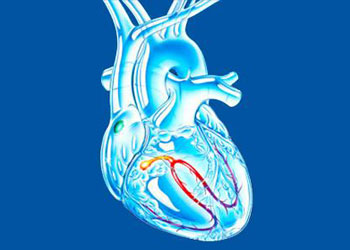 Do you know that our heart has an electrical system?
The normal electrical conduction in the heart allows the impulse that is generated by the sinoatrial node (SA node) of the heart to be propagated to (and stimulate) the myocardium (Cardiac muscle). The myocardium contracts after stimulation. It is the ordered stimulation of the myocardium that allows efficient contraction of the heart, thereby allowing blood to be pumped throughout the body.
Do you know that our heart has an electrical system?
The normal electrical conduction in the heart allows the impulse that is generated by the sinoatrial node (SA node) of the heart to be propagated to (and stimulate) the myocardium (Cardiac muscle). The myocardium contracts after stimulation. It is the ordered stimulation of the myocardium that allows efficient contraction of the heart, thereby allowing blood to be pumped throughout the body. Do you know that our heart has an electrical system? It is a bit like the electrical wiring in our home. The heart's electrical system creates the signals that tell our heart when to beat. And our heartbeat is what pumps blood throughout our body. The heart's electrical system is also called the cardiac conduction system.
Parts of the Electrical System:
Heart's electrical system includes three important parts:
- S–A node (sinoatrial node) – known as the heart's natural pacemaker, the S–A node has special cells that create the electricity that makes our heart beat.
- A–V node (atrioventricular node) – the A–V node is the bridge between the atria and ventricles. Electrical signals pass from the atria down to the ventricles through the A–V node.
- Bundle of His–Purkinje system – the His–Purkinje system carries the electrical signals throughout the ventricles to make them contract. The parts of the His–Purkinje system include:
- His Bundle (the start of the system)
- Right bundle branch
- Left bundle branch
- Purkinje fibers (the end of the system).
 SA node – The pacemaker of the heart
There are a special group of cells that have the ability to generate electrical activity on their own. This produces electrical impulses in the pacemaker cells which spread over the heart, causing it to contract. These cells do this more than once per second to produce a normal heart beat of 72 beats per minute. These tiny group of cells known as the sinoatrial node is responsible for coordinating heart beat rate across your heart
SA node – The pacemaker of the heart
There are a special group of cells that have the ability to generate electrical activity on their own. This produces electrical impulses in the pacemaker cells which spread over the heart, causing it to contract. These cells do this more than once per second to produce a normal heart beat of 72 beats per minute. These tiny group of cells known as the sinoatrial node is responsible for coordinating heart beat rate across your heart Electrical Signals and Blood Flow
The S–A node normally produces 60–100 electrical signals per minute – this is our heart rate, or pulse. With each pulse, signals from the S–A node follow a natural electrical pathway through our heart walls. The movement of the electrical signals causes our heart's chambers to contract and relax. In a healthy heart, the chambers contract and relax in a coordinated way, or in rhythm. When our heart beats in rhythm at a normal rate, it is called sinus rhythm.
When working well, our conduction system automatically responds to our body's changing need for oxygen:
- When we climb stairs, carry heavy groceries, or take a walk, we need more oxygen; therefore, our heart beats at a faster heart rate.
- When we are sitting or sleeping, we need less oxygen; therefore, our heart beats at a slower rate.
Thus, our conduction system senses the need for oxygen and responds with the proper heart rate. A problem in heart's electrical system can disrupt heart's normal rhythm. Any kind of abnormal rhythm or heart rate is called an arrhythmia. When your heart beats out of rhythm, it may not deliver enough blood to your body.